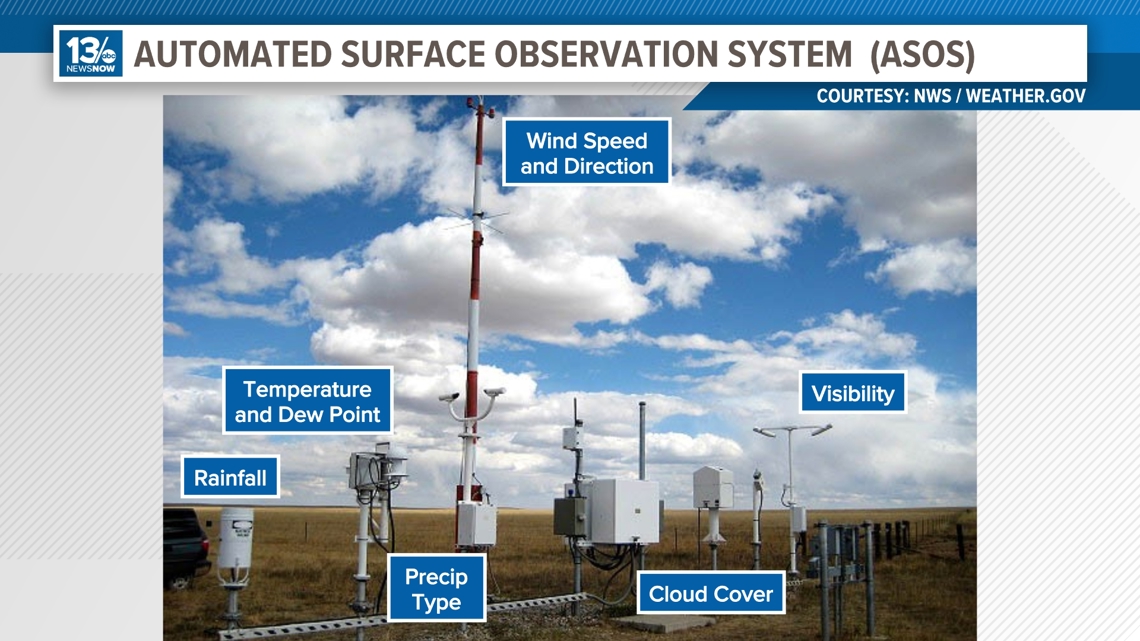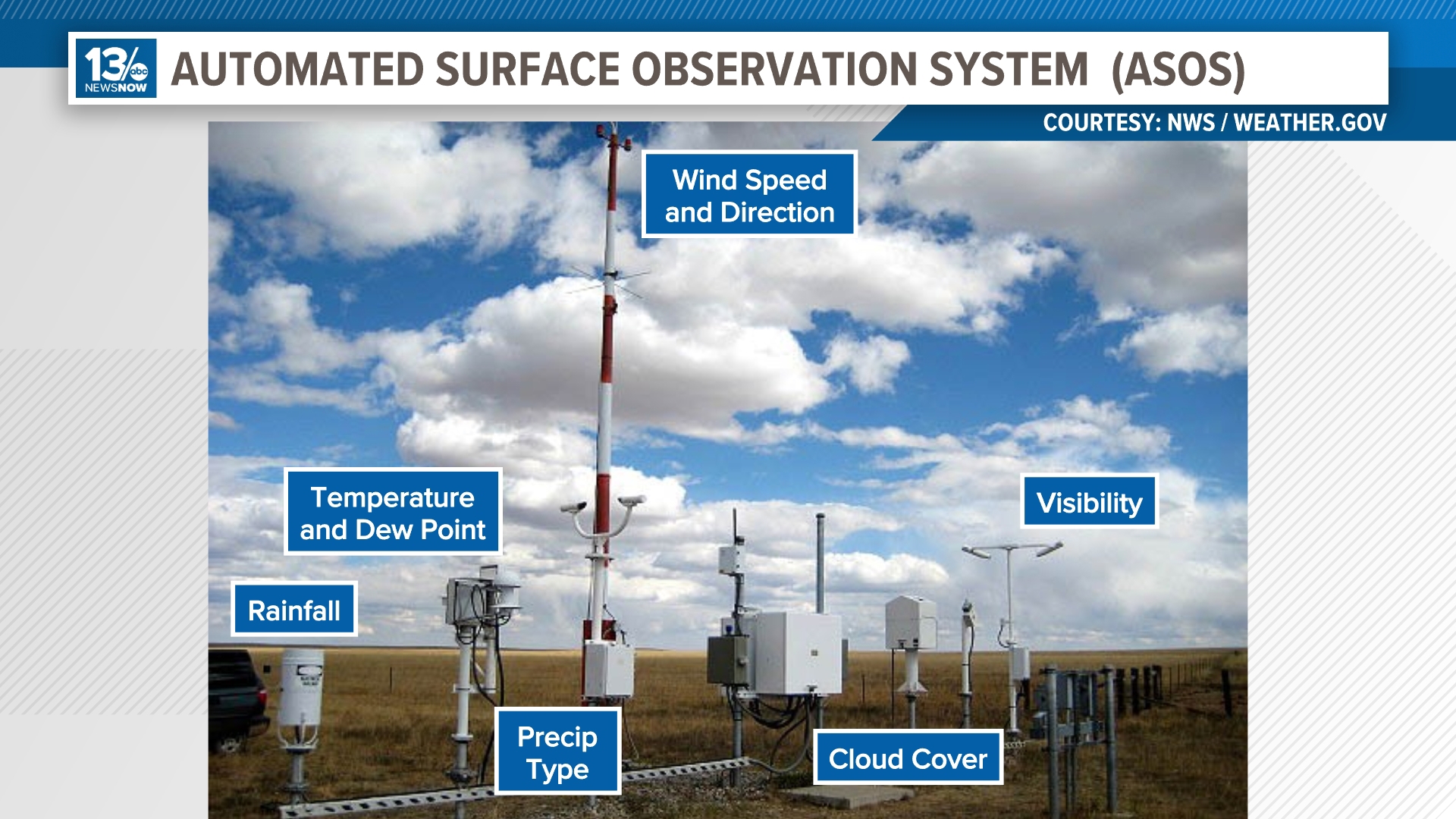NORFOLK, Va. — It’s something we mention in every newscast, in fact, it’s usually at the bottom right-hand corner of your screen - the temperature and weather conditions. But where does that information come from?
When we give the local weather statistics, most of the time we are using an Automated Surface Observing System, or ASOS, located at a local airport. For Norfolk, that’s Norfolk International Airport. We also use Newport News/Williamsburg Airport, local military runways, and smaller, municipal airports.
While some airports still have human observations, most are now automated. There are currently more than 900 ASOS sites in the United States, according to NOAA.
Airports have a long history of weather observations because detailed, quality weather reports are vital to air safety. The ASOS contains sensors that record rainfall, temperature, dewpoint, pressure, precipitation type, wind speed and direction, cloud cover, freezing rain accumulation, and visibility. Some even have lightning detection. These conditions are recorded twenty-four hours a day, seven days a week.


Since airports are large, open areas with few obstructions they are the perfect location for observing and keeping accurate weather data, which then contributes to the climatological records for an area. And with every ASOS station having the same set of instruments and location parameters, the data is consistent from location to location.
Official records for the Norfolk area go back to the 1870s, but the location of the thermometer moved several times. In 1940, we started using Norfolk International Airport, then known as Norfolk Municipal Airport, when the runway and passenger terminal were completed.

